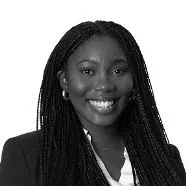KEY TAKEAWAYS:
- In contrast to other circuits, the Second Circuit has not clarified how the Supreme Court's decision in Comcast applies to Section 14(a) class actions.
- Winston seeks the Second Circuit's clarification on the application of Comcast to Section 14(a) securities class actions.
On September 28, 2023, Winston & Strawn LLP filed a Rule 23(f) petition in the Second Circuit requesting permission to appeal the district court's grant of class certification—seeking clarification with respect to the application of the Supreme Court's decision in Comcast v. Behrend, 569 U.S. 27 (2013). See Erickson v. Jernigan Capital, Inc., No. 23-1350. (2d Cir.).
The Supreme Court's decision in Comcast requires that a plaintiff "affirmatively demonstrate" through "evidentiary proof" that damages are measurable on a class-wide basis through a common methodology that measures damages solely attributable to its theory of liability. If the damages model fails to accomplish this, it cannot prove that a single measure of damages can be used for all putative class members—and the class would fail to satisfy the predominance requirement under Federal Rule of Civil Procedure 23(b)(3). To accomplish this, Comcast requires that district courts engage in a "rigorous analysis" of a plaintiff's proposed damages methodology as compared with its theory of liability, even where such an analysis necessarily overlaps with merits issues.
Since that Supreme Court decision, courts have held that Comcast applies to securities fraud cases generally. See Univ. of Puerto Rico Ret. Sys. v. Lannett Co., No. 21-3150, 2023 WL 2985120, at *3 (3d Cir. Apr. 18, 2023). However, cases applying Comcast to Section 14(a) are rare. Currently, there is no post-Comcast Section 14(a) class certification opinion in the Second Circuit. The few courts that have attempted to apply Comcast since the Supreme Court's decision have diverged over how much a plaintiff must do to satisfy this requirement.
For example, in In re Willis Towers Watson PLC Proxy Litigation, 2020 WL 5361582 (E.D. Va. Sept. 4, 2020), the Fourth Circuit held that plaintiffs' damages methodology satisfied Comcast's standard because it was enough to assume that the merger involved in that case would have been rejected if all material information had been disclosed (as is necessary to have Section 14(a) liability), and the court proposed a methodology consistent with that theory of liability. In contrast, the Ninth Circuit appears to take a more rigorous approach. In Loritz v. Exide Technologies, 2015 WL 6790247, at *22-23 (C.D. Cal. July 21, 2015), the court denied class certification under Comcast where plaintiff "discusse[d] general techniques for computing damages in securities fraud cases" but "fail[ed] to tie these theories to the facts of this case." The Second Circuit has yet to address this issue in the Section 14(a) context.
Winston's petition argued that Plaintiff's proffered damages methodology cannot satisfy Comcast in light of the inconsistency between that methodology and Plaintiff's theory of liability. This case presents the Second Circuit with a rare opportunity outside the conventional Section 10(b) federal securities framework to address this key issue for class certification. While Winston awaits the Second Circuit's decision, the case continues as the parties resume discovery.
The content of this article is intended to provide a general guide to the subject matter. Specialist advice should be sought about your specific circumstances.



